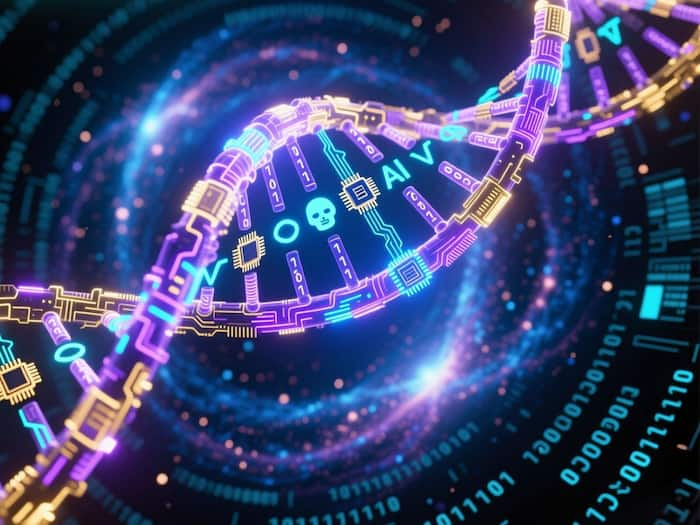
Written By Divya
Edited By: Divya | Published By: Divya | Published: Sep 20, 2025, 09:05 AM (IST)

Artificial intelligence is finding its way into almost every field, and now it has entered biology in a big way. Researchers at Stanford and the Arc Institute have created the world’s first viruses designed entirely by AI. These viruses can infect and kill E. coli bacteria, showing what could be a new direction for biotechnology. Also Read: AI Fake Movie Trailers Lead To Permanent YouTube Channel Ban
So far, AI tools have been used to design proteins or small gene systems. But creating an entire genome is a much bigger challenge. Why? A genome needs to balance multiple interacting genes and regulatory elements so that the organism can grow and survive. For scientists, this has always been a difficult task. The study titled “Generative design of novel bacteriophages with genome language models” was published in bioRxiv. Also Read: Samsung Beats Apple! World’s First 2nm Mobile Exynos 2600 Chip Is Here, Galaxy S26 Series Likely to Get It
The researchers chose a small virus called ΦX174 (phi-X-174) as their test case. It’s known for infecting E. coli and has a relatively simple genome of about 5,386 DNA letters and 11 genes, most of which overlap. Interestingly, ΦX174 was also the first genome ever sequenced back in 1977 and the first to be synthesised in 2003. Also Read: ChatGPT Is Getting Its Own App Store As OpenAI Invites Developers
Using an AI model named Evo, trained on millions of viral genomes, the team generated thousands of candidate designs. After a series of checks, 302 designs were synthesised in the lab. Out of the 302 designs, only 16 turned out to be functional and were able to infect bacteria. What stands out is that these AI-made viruses carried hundreds of mutations that don’t exist in nature. Some of them even managed to pull off results that scientists had tried and failed to achieve in the past.
In one case, the AI managed to use a DNA-packaging protein from a distant relative virus – something earlier experiments couldn’t get right. It highlights how AI isn’t just repeating known methods but actually finding new ways to solve problems.
That said, we aren’t at the stage of AI creating life yet. Researchers are clear that this is just an early step. But it does open up possibilities for new treatments, especially when antibiotic resistance is becoming a global issue.